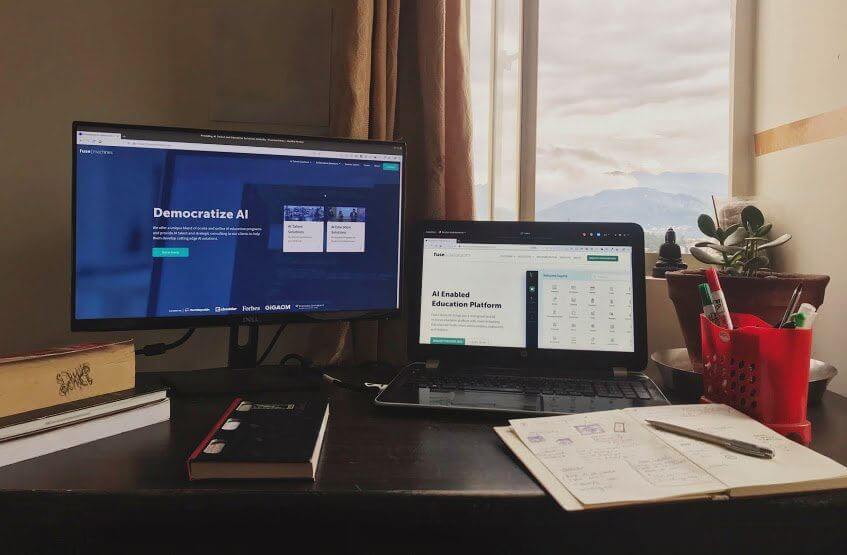Just a few schools in developing countries such as Nepal were able to implement virtual classes. Obstacles such as lack of laptops and reliable WiFi forced schools with weak infrastructure to resume physical classes. But experts argue returning to traditional learning methods won’t be as impactful without online tools.
A mixed learning environment that combines in-person and online teaching tools is the best option. A survey (Duffin, 2019) showed 52% of U.S. grad students preferred online education over classroom education. In another study by Blackboard, 59% of teachers reported that students were more motivated to learn in a blended learning environment.
Blended learning is the next big thing for education.
Blended learning in Nepal
Rural schools lack basic infrastructure such as electricity to attend classes so adopting blended learning seems nearly impossible. It is time the government (and all stakeholders) focus on these schools and create a digitization roadmap.
Urban schools can afford amenities such as computer labs and internet access and are on the verge of digitization and can adopt blended learning models. Some of these include Station Rotation (where at least one station is a computer-based/online learning experience), Lab Rotation (where online learning occurs in a dedicated computer lab on a fixed schedule) and Flex blended learning (where students are given the flexibility to learn at their own pace using an online course material).
For schools like these, blended learning is a long-term solution that complements and enhances existing face-to-face systems.
Benefits of blended learning
A blend of synchronous and asynchronous teaching modalities gives students the best of both worlds. Students who need extra attention can reach out to their instructors online and learn flexibly with downloadable interactive learning resources. Students without reliable WiFi or a laptop can still come to school and learn in person.
Blended learning is also cost-effective. Schools can repurpose digital course content without spending on course preparation. Live online classes eliminate commutes and their corresponding costs.
Teachers too can focus on creating interactive lesson plans with time saved from commuting or printing. This also reduces the cost of education for students while maintaining quality. By implementing blended learning strategically, an institution could reduce costs by nearly 50%!
Challenges of resuming physical classes
There is pressure from parents and students to resume physical classes; however, dropout rates in rural and urban areas have skyrocketed. A report showed most schools in Kathmandu had only a handful of students attending classes.
President of Private and Boarding Schools Organisation Nepal (PABSON), Mr. Tika Ram Puri, says about 25% of primary school students have dropped out because of infection risk and parents demanding online education. Suprabhat Bhandari, chairperson of the Guardians Federation Nepal stated resuming physical classes would not be wise. Despite physically distanced seating charts and strict health protocols, children share bathrooms, playgrounds, and water taps.
We need a safe, cost-effective, and results-driven program, and blended learning is the answer. Schools can limit in-person classes to once or twice a week while at the same time providing online classes to avoid risk.
Fuse Classroom, an advanced AI education solution, is committed to reimagining and rethinking Nepal’s education system through blended learning, and we believe it will become a key component in bringing about a digital transformation.

